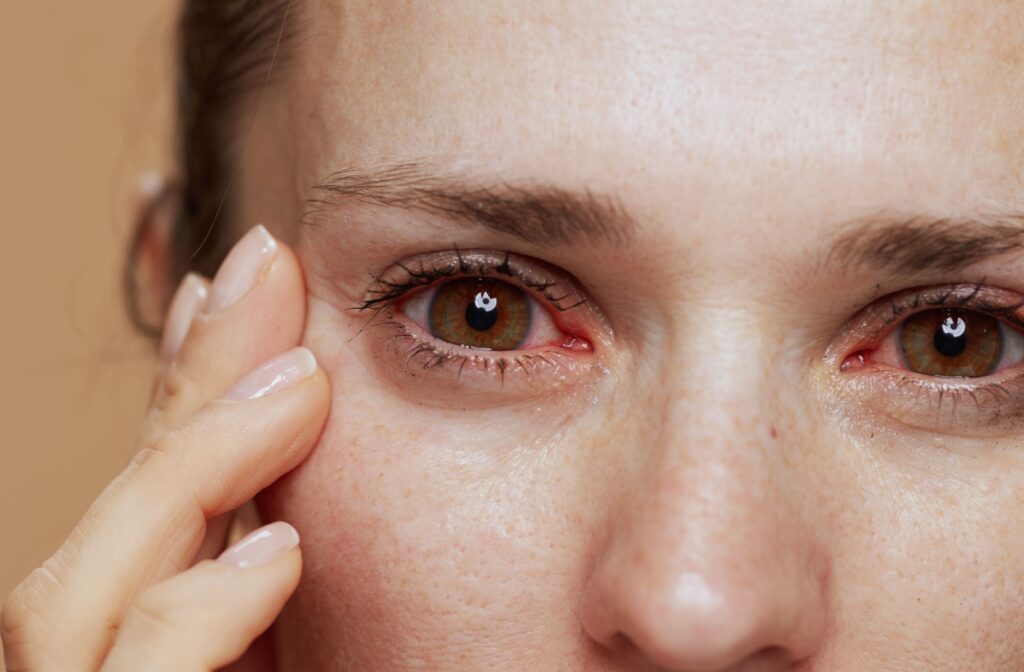Dry eye disease is a condition that affects the surface of the eye. It occurs when the eye doesn’t receive adequate lubrication or moisture. For many people, dry eye is more than just an occasional feeling of dryness, but a consistent discomfort that affects daily life and activities.
Dry eye often develops gradually, and because it shares symptoms with other eye conditions, it’s not always easy to recognize at first. People experiencing dry eye might not describe their symptoms as “dryness” at all. Instead, they may talk about stinging, burning, or the feeling that something is in their eye.
Symptoms Associated with Dry Eye
While everyone’s experience with dry eye disease is slightly different, there are several common symptoms. These sensations may appear sporadically or persist throughout the day, especially after certain activities or in particular environments. They include:
- A scratchy or gritty feeling, like sand or dust is trapped in the eye
- A stinging or burning sensation, especially toward the end of the day
- A persistent feeling that the eyes are tired or sore
- Discomfort when blinking, as though the eyelids are brushing against a dry surface
- General eye irritation that worsens in wind or air-conditioned settings
These symptoms may affect one or both eyes and can vary depending on the underlying cause of dry eye disease.
Dry Eye Doesn’t Always Feel Dry
Interestingly, one of the more confusing aspects of dry eye is that it doesn’t always feel dry. In fact, excessive tearing is actually a possible symptom. This happens when the body overproduces tears in response to dryness. However, these tears are often poor in quality and evaporate quickly, offering little lasting relief.
Watery Eyes as a Symptom
- Watering eyes, even without emotional triggers
- Tears that don’t seem to help improve comfort
- A cycle of tearing followed by more irritation
This kind of paradoxical response can make it difficult for people to connect their symptoms to dryness.
Visual Disturbances & Focus Fatigue
Dry eye can affect more than just comfort. When the tear film is unstable or lacking in quality, vision can become blurry or fluctuate throughout the day. The eyes depend on a consistent tear layer to maintain clear vision. When that layer breaks up, the result is blurred or smeared vision, even when the eyes themselves are healthy.
Visual Symptoms Linked to Dry Eye
- Blurred vision that improves with blinking
- Difficulty keeping vision steady during reading or screen use
- Visual fatigue that makes it hard to concentrate for long periods
These symptoms often appear during or after focused tasks like reading, driving, or working on a computer.
Environmental Triggers & Daily Patterns
The discomfort caused by dry eye can be influenced by factors in your environment or your daily habits. Some people notice that symptoms flare up during specific activities or in certain conditions. Identifying these patterns can be helpful for managing and reducing the frequency of symptoms.
Common triggers for dry eye include:
- In rooms with heating, air conditioning, or ceiling fans
- After long hours on a digital screen or reading without blinking enough
- While driving, especially with airflow directed at the face
- In dry climates or during allergy season
- When waking up, due to poor tear production during sleep
While these factors don’t necessarily cause dry eye, they can intensify symptoms and make the condition feel more persistent.

The Emotional & Physical Toll
Dry eye disease isn’t just a physical issue. The persistent irritation, visual disturbance, and discomfort can lead to frustration and even anxiety. People who deal with dry eye may find themselves avoiding certain activities or feeling uncomfortable in social and work settings because of how often they need to blink, apply drops, or rub their eyes.
Quality of Life Impact
Over time, this constant discomfort may affect mood and daily function. Tasks that once felt simple, like reading, working on a laptop, or wearing contact lenses, may become more challenging. Sleep may also be affected if symptoms continue into the evening or cause irritation upon waking.
When to Seek a Professional Opinion
If any of these symptoms sound familiar, it’s important to get a professional evaluation. While over-the-counter drops may offer temporary relief, they often don’t address the underlying cause of dry eye. A proper assessment can help determine what’s contributing to the discomfort, whether it’s inflammation, poor tear quality, or reduced tear production.
Why an Exam Matters
Early diagnosis allows for better symptom management and a more targeted approach to relief. Some cases may benefit from in-office treatments or products that support long-term eye surface health.
Booking an Evaluation
Anyone experiencing persistent eye discomfort, blurred vision, or unexplained tearing should consider scheduling an eye exam to explore the possibility of dry eye disease. Our team at Advanced Family Eye Care offers detailed evaluations and a personalized approach to eye comfort, helping patients better understand their symptoms and options for relief.


















